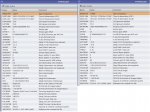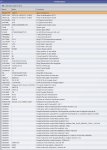I recently switched from a DSLR to an ASI2600MC because I was tired of dealing with thermal sensor noise in my images. So this is my first attempt at stacking images with a cooled, dedicated astrocam. Unfortunately, the calibrated, stacked image has fine horizontal lines in it (see attached image, although I'm not sure the reduced resolution will show the effect very well).
It's likely that I'm doing something incorrect during the calibration and integration process, but I don't know what. These horizontal lines also appear in the stretched Master Dark and Master Dark Flat. Dithering was used for most of the Light frames used in the stacking process.
Bias, Darks, and Flats were used to calibrate this image, then a Dynamic Crop and DBE. I have a Master Dark Flat as well, but haven't used it yet. The Master Flat was calibrated using the Master Bias (but not the Master Dark). The Light frames were calibrated with the Master Dark and Master Flat (but not the Master Bias).
What am I doing wrong?
In case anyone wants to have a look at the actual images, there are all posted here for reference.

It's likely that I'm doing something incorrect during the calibration and integration process, but I don't know what. These horizontal lines also appear in the stretched Master Dark and Master Dark Flat. Dithering was used for most of the Light frames used in the stacking process.
Bias, Darks, and Flats were used to calibrate this image, then a Dynamic Crop and DBE. I have a Master Dark Flat as well, but haven't used it yet. The Master Flat was calibrated using the Master Bias (but not the Master Dark). The Light frames were calibrated with the Master Dark and Master Flat (but not the Master Bias).
What am I doing wrong?
In case anyone wants to have a look at the actual images, there are all posted here for reference.



